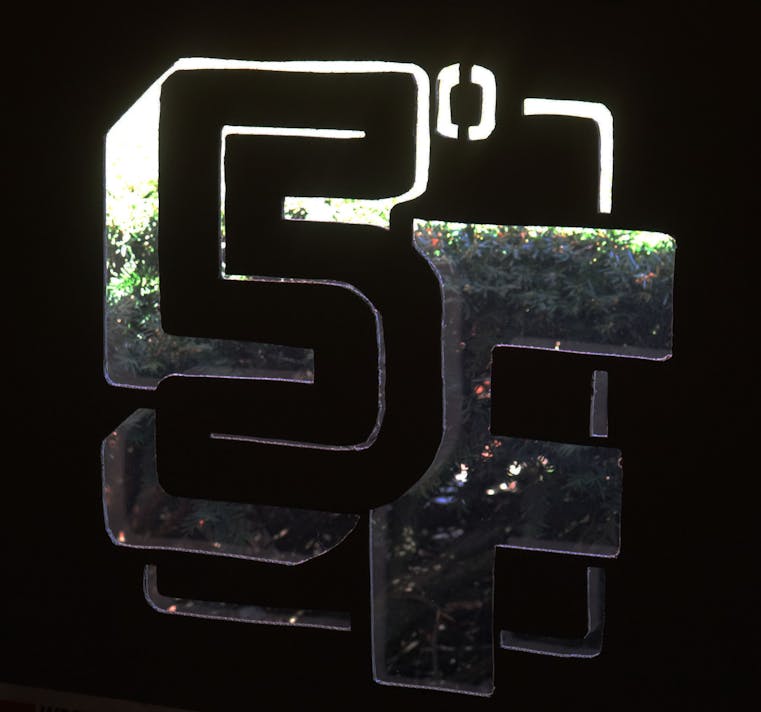Turning trash to art: Graphic design seniors create interactive exhibit highlighting climate change

The Central Michigan University Art Gallery currently features a cow made out of recycled fast-food containers, jackets made from fast-fashion packaging and a representation of the Earth's potential future.
With those projects and many more set up in a maze, the exhibition takes you through five key sections related to climate change. These sections include Code Blue, Unforeseen Circumstances, It Doesn't Matter, No Place Like Home and the Doom Room.

This exhibition, entitled "5°F," is the culmination of an academic year full of climate change research, individual ideas and continuous teamwork of the 19 graphic design senior capstone students.
"The meaning behind the exhibition's name (5°F) is the global temperature's 'point of no return,'" the exhibit's "About" reads. "Our goal is to educate as many people as we can about the harm humans are inflicting on our environment, the changes we are already seeing, experiencing and how people can help now."
The capstone students used facts, garbage and their imagination to create a representation of society's treatment of the environment to educate their audience.
Perry senior Symantha Taylor said the reason her class chose to focus on climate change and sustainability is because of the large role the environment plays in everyday life.
"There are still a lot of people out there that still think climate change is a joke," Taylor said. "We wanted to break it down for people to understand that ... climate change is all around us."
In addition to consistent teamwork between classmates, the exhibit features partnerships with the Museum of Cultural and Natural History and Mount Pleasant Elementary School. Visitors can interact with the art by making a plant to take home, writing on sticky notes and following QR codes throughout the gallery.
In order to leave a legacy, the students worked with University Landscaping to donate 30 trees to CMU in order to create a carbon sink, a natural environment that absorbs more carbon dioxide than it releases, on campus. The class received funding for the trees from Tractor Supply Co. and a few individuals with ties to members of the group.
Saginaw senior Jasmine Southward said all of the collaborations and interactive exhibit displays help illustrate how everyone can play a role in making a difference.
"It's not like a regular gallery show when you come, you just look around and then you leave," Southward said. "We wanted to create an experience for people and us trying to do that created extra work for us. Though, I felt it was definitely worth it."
Graphic design faculty member David Stairs said the goal of these group capstone exhibits, which have been created annually since 2008, is to have students use their "skills as designers to raise attention to critical subjects."
Stairs said the gallery is "chocked full of stuff" due to the amount of research the class did. He said students kept coming up with more ideas after the exhibit was planned out.
"When I say it's the most complex exhibition that the gallery's ever put on, it's not an overstatement," Stairs said. "That's one indication of how much work was done and how hard they worked."
The exhibit, which opened on April 2, will stay up in the University Art Gallery until April 16. The University Art Gallery is open Tuesday through Friday 11 a.m. to 6 p.m. and Saturday 11 a.m. to 3 p.m.
"(I hope) people go in and think, 'Oh my gosh, this is so great! I didn't know this information,'" Taylor said. "It's a great takeaway for them to go through."






